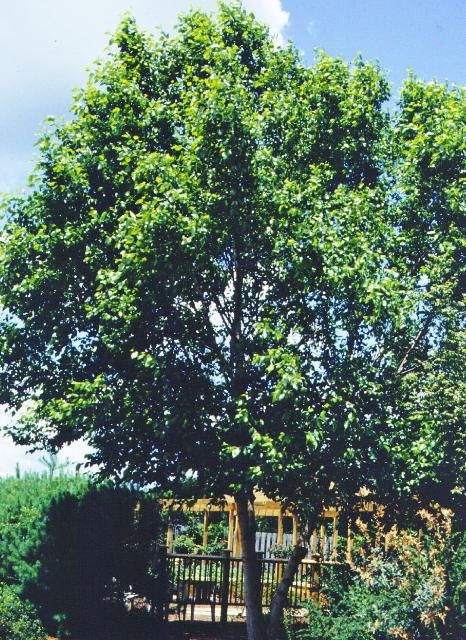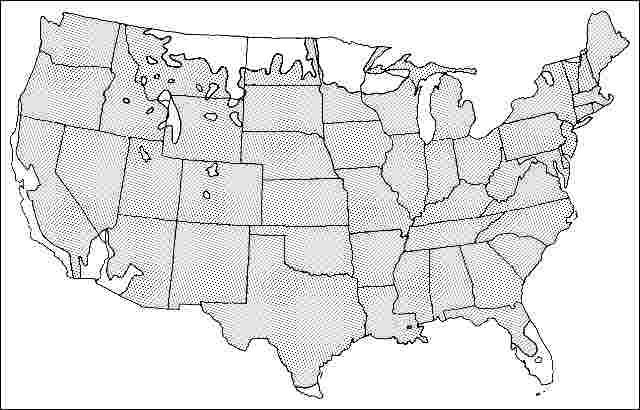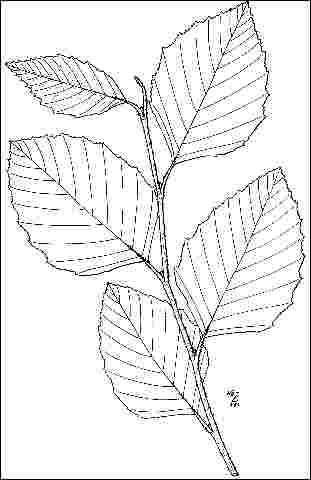Introduction
A North American native, 'Heritage' river birch can grow 50 to 80 feet tall but is often seen at 40 to 50 feet. It will grow about 30 inches or more each year in USDA hardiness zone 7, faster in the South. It has a narrow, pyramidal to oval crown with many fine branches when young, spreading wider and becoming more oval with age, with several branches eventually becoming dominant. It has scaly, beige or creamy white bark, which remains an attractive pinkish-white for a longer period of time than the species. The leaves are generally shaped like a triangle.

Credit: Ed Gilman
General Information
Scientific name: Betula nigra
Pronunciation: BET-yoo-luh NYE-gruh
Common name(s): 'Heritage' river birch
Family: Betulaceae
USDA hardiness zones: 4A through 9A (Fig. 2)
Origin: native to North America
Invasive potential: little invasive potential
Uses: tree lawn 4–6 feet wide; tree lawn > 6 ft. wide; hedge; street without sidewalk; screen; shade; specimen; deck or patio
Availability: somewhat available, may have to go out of the region to find the tree

Description
Height: 40 to 50 feet
Spread: 25 to 35 feet
Crown uniformity: symmetrical
Crown shape: oval, upright/erect, pyramidal
Crown density: dense
Growth rate: fast
Texture: medium
Foliage
Leaf arrangement: alternate (Fig. 3)
Leaf type: simple
Leaf margin: double serrate
Leaf shape: rhomboid, ovate
Leaf venation: pinnate
Leaf type and persistence: deciduous
Leaf blade length: 2 to 4 inches
Leaf color: green
Fall color: yellow
Fall characteristic: not showy

Flower
Flower color: brown
Flower characteristics: not showy
Fruit
Fruit shape: elongated
Fruit length: 1 to 3 inches
Fruit covering: dry or hard
Fruit color: brown
Fruit characteristics: does not attract wildlife; not showy; fruit/leaves not a litter problem
Trunk and Branches
Trunk/bark/branches: branches droop; very showy; typically multi-trunked; thorns
Pruning requirement: little required
Breakage: resistant
Current year twig color: reddish, brown
Current year twig thickness: thin
Wood specific gravity: unknown
Culture
Light requirement: full sun, partial sun or partial shade
Soil tolerances: sand; loam; clay; acidic; well-drained; extended flooding
Drought tolerance: moderate
Aerosol salt tolerance: low
Other
Roots: not a problem
Winter interest: yes
Outstanding tree: yes
Ozone sensitivity: unknown
Verticillium wilt susceptibility: resistant
Pest resistance: resistant to pests/diseases
Use and Management
'Heritage' river birch can be trained with one central leader or as a multi-stemmed tree. Like the species, it branches low on the trunk, which makes it well suited for use as a specimen tree, but the trunk must be cleared up for street or other urban uses to allow for pedestrian and vehicular clearance. Some nurseries plant two or three liners together to form a clump, but these trunks will not fuse into one strong trunk. In addition, one of the trunks usually outgrows and suppresses the others. It should be grown more as a single-trunked specimen. The branches droop when they are wet, so be careful locating them close to areas where clearance is needed for vehicular traffic.
It is very well suited for planting along steam banks and in other areas that are inundated with water for weeks at a time. River birch is seen in the wild almost exclusively along stream banks. 'Heritage' river birch tolerates low soil oxygen, periodic flooding, clay, and prefers moist soil. The tree requires an acid soil, otherwise it becomes chlorotic. 'Heritage' river birch is hardy, grows rapidly, but tends to be short-lived (30 to 40 years) in many urban settings, including street tree plantings. This might be due to inadequate water supply in dry soil or root rots in continually wet soil. But like the Callery pears, it will look great for about two decades or more, and this is better than many other trees commonly planted in urban areas. Although the tree tolerates heat well in the South, situate the tree so it receives adequate water since leaves may scorch in dry soil. Not a tree to plant and forget due to irrigation requirement. Not for confined street tree pits or tree lawns in the South unless provided with irrigation. Although it is better adapted to heat than other birches, not a highly heat-tolerant tree.
Propagation of 'Heritage' river birch is by softwood cuttings, but the plant is patented.
Pests and Diseases
No pests or diseases are of major concern. 'Heritage' river birch is reportedly resistant to bronze birch borer. Susceptible to leaf miner and scorch, and to leaf spots in wet climates. Aphids and caterpillars infest foliage.